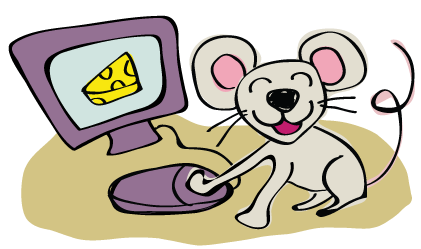Surgery 101
 How do I prepare my pet for surgery?
How do I prepare my pet for surgery?
Give your pet his normal meal and medications the night before surgery, and withhold all meals after 8 pm. Give any prescribed pre-surgical meds as directed; it is okay to use a very small amount of food to assist in medicating. Bring your pet to the clinic on a leash or a carrier at 7:30 am on the day of surgery. Cats often benefit from having a towel placed over their carrier just before they enter the clinic, so that they are not stressed by the surroundings. If your pet has comfort items like blankets or shirts, please bring them to be placed in her house for the day. When you arrive, a certified veterinary technician (CVT) will meet with you for about 10 minutes to address any last minute concerns.
What happens during surgery?
When your pet is admitted for surgery, she will be examined by a veterinarian
and her medical records will be reviewed again to ensure no detail is overlooked. Next, an anesthetic protocol is created to ensure a safe and smooth surgery
and recovery, and your pet is given a sedative to minimize stress. A small area
on a leg will be shaved to facilitate the placement of an IV catheter. Once the surgical area is prepared, your pet is anesthetized with a short-acting medication. This is followed by placement of a breathing tube into the trachea (intubation), allowing us to maintain general anesthesia while she breathes inhalant anesthetic gases. Depending on the type of surgery, your pet may be prepped with a shave, surgical scrub, and hooked up to anesthetic monitors. Oxygen perfusion, heart and respiratory rates, ECG, blood pressure, CO2 level, and temperature are all monitored during surgery to ensure your pet is staying at an optimal anesthetic level. Intravenous fluids are given to maintain ideal blood pressure and a blanket warmer is wrapped around your pet to keep her warm. A CVT will monitor the entire anesthetic event while a doctor performs the surgery, and your pet will
be within an arm’s reach of a CVT at all times until she is safely recovering in her kennel with her belongings. Your pet is closely monitored until you pick her up. All additional treatments (nail trim, etc.) that you request will be done at the end of surgery to take advantage of your pet’s time under anesthesia. See “Our Services” page on our website for the list of add-on treatments available to your pet. (Add-on services list coming soon)
When can I pick up my pet?
Please be available to pick up your pet between 3:00 – 5:30 pm. We cannot guarantee a specific pick up time because your pet’s recovery from anesthesia will determine when she is ready to go home. We recommend you stay at home with your pet for the rest of the evening so that she remains under observation.
How will my pet act after surgery, and what should I do to keep her safe?
 Your pet has had a very big day. She is expected to be sleepy to some degree when you pick her up, and you may notice some unusual behavior. For example, if she has had a dental procedure, her mouth may be numb and she may lick or lip smack excessively. If she has had an incision, she may move a little differently. Most patients will eat a little more slowly the evening of surgery, but most should be eating nearly their entire meal by the evening of the next day. Keep your pet in a quiet, comfortable, stress-free location when she gets home, and do not leave her unattended for the rest of the night. Dogs should be kept on a leash while outdoors, and cats should remain indoors. Cats that come home smelling like a veterinary clinic may get a cold reception from other cats in the house, so it is important to keep them isolated for the first few hours. We will send you home with more specific instructions depending on your pet’s surgical procedure.
Your pet has had a very big day. She is expected to be sleepy to some degree when you pick her up, and you may notice some unusual behavior. For example, if she has had a dental procedure, her mouth may be numb and she may lick or lip smack excessively. If she has had an incision, she may move a little differently. Most patients will eat a little more slowly the evening of surgery, but most should be eating nearly their entire meal by the evening of the next day. Keep your pet in a quiet, comfortable, stress-free location when she gets home, and do not leave her unattended for the rest of the night. Dogs should be kept on a leash while outdoors, and cats should remain indoors. Cats that come home smelling like a veterinary clinic may get a cold reception from other cats in the house, so it is important to keep them isolated for the first few hours. We will send you home with more specific instructions depending on your pet’s surgical procedure.
Things to Remember:
- No food after 8 PM (water OK!)
- Give any pre-surgical meds as directed
- Drop off at 7:30 AM
- Pick up between 3:00 – 5:30 PM
- Bring “comfort items” (e.g., blanket, your shirt)

 How do I prepare my pet for surgery?
How do I prepare my pet for surgery?

